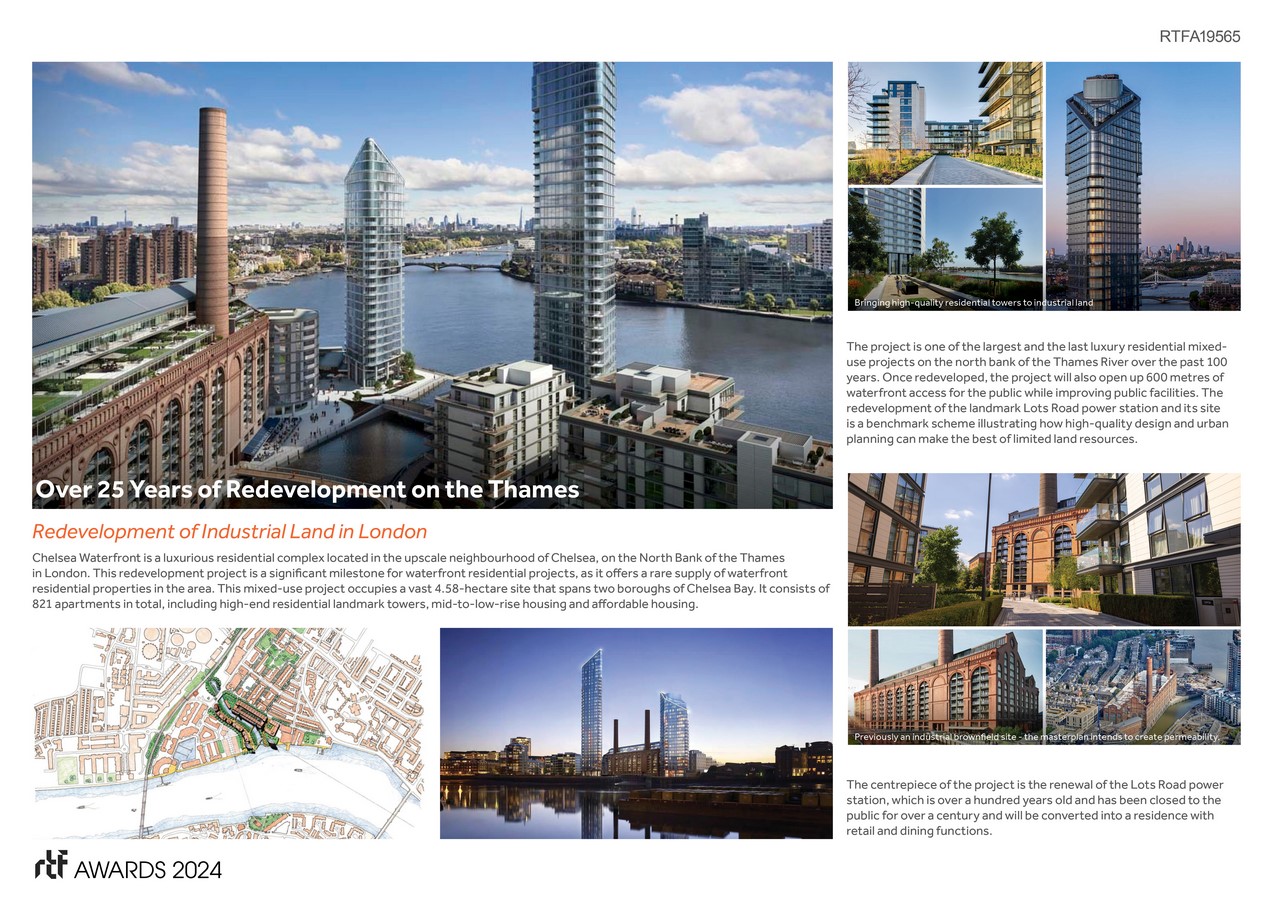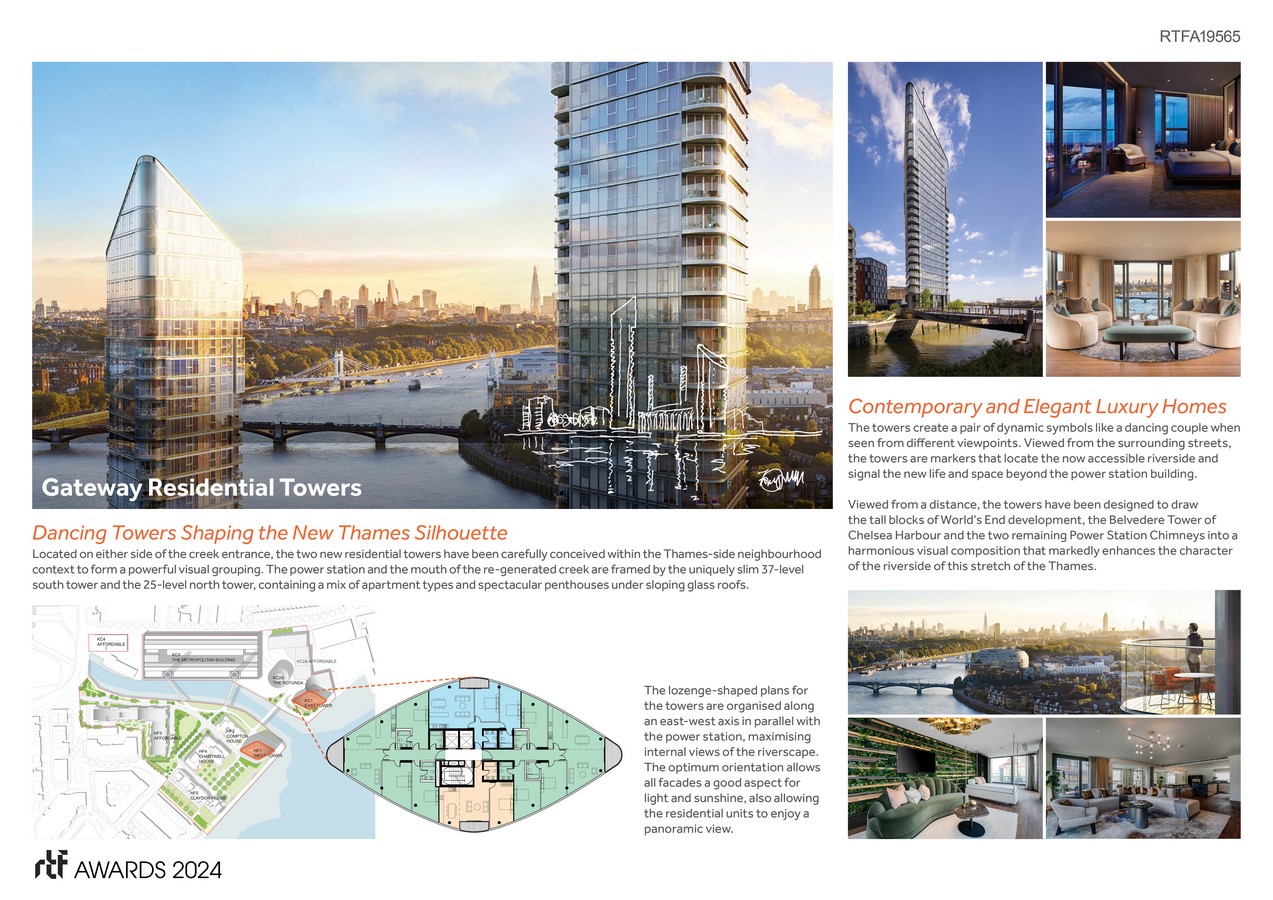Chelsea Waterfront is a luxurious residential complex located in the upscale neighbourhood of Chelsea, on the North Bank of the Thames in London.
Rethinking The Future Awards 2024
Second Award | Urban Design (Built)
Project Name: Chelsea Waterfront
Category: Urban Design (Built)
Studio Name: Farrells
Design Team: Farrells
Area: 4.58ha site; 3.31ha of open space
Year: 2024
Location: London
Consultants:
Photography Credits: CK Asset Holdings Limited
Render Credits: Farrells
Other Credits:

This redevelopment project is a significant milestone for waterfront residential projects, as it offers a rare supply of waterfront residential properties in the area. This mixed-use project occupies a vast 4.58-hectare site that spans two boroughs of Chelsea Bay.

It consists of 821 apartments in total, including high-end residential landmark towers, mid-to-low-rise housing and affordable housing. The centrepiece of the project is the renewal of the Lots Road power station, which is over a hundred years old and has been closed to the public for over a century and will be converted into a residence with retail and dining functions. The project is one of the largest and the last luxury residential mixed-use projects on the north bank of the Thames River over the past 100 years. Once redeveloped, the project will also open up 600 metres of waterfront access for the public while improving public facilities.

The masterplanning principle is to create a new ‘village’ connecting the Lots Road neighbourhood on one side of Chelsea Creek and with the Chelsea Harbour and Imperial Wharf on the other. The need to open up the site and establish pedestrian links in the surrounding neighbourhoods has fundamentally informed our proposals for Lots Road and the key driver has been our purpose to enhance integration and permeability across the development.

The redevelopment of the landmark Lots Road power station and its site is a benchmark scheme illustrating how high-quality design and urban planning can make the best of limited land resources. It responds to the UK government’s agenda on the regeneration of industrial land by delivering world-class design on an important brownfield site and unifies an important but currently fractured district of London by introducing physical, social and visual permeability. The project is significant in terms of social welfare, economic benefits, and environmental sustainability and support for the scheme has come originally from the Commission for Architecture and the Built Environment (CABE), English Heritage, the Greater London Authority and Transport for London.














